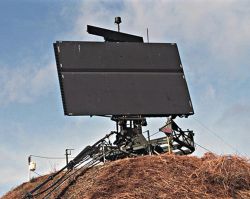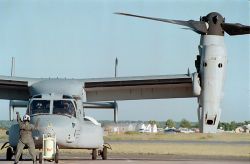U.S. Heading To Next Phase of Long-Range Radar Program

The U.S. Air Force’s new ground-based, long-range radar system is ready to move forward after the completion of recent prototype demonstrations.
The Theater Battle Control Division's Three-Dimensional Expeditionary Long-Range Radar, or 3DELRR, program office recently evaluated three prototype capability demonstrations during the pre-engineering and manufacturing development phase of the program.
3DELRR will detect, identify and track fixed- and rotary-wing aircraft and will replace the decades-old TPS-75 radar as the principal Air Force long-range, ground-based sensor. During the demonstrations, each of the current technology demonstration phase contractors held a day-long event to showcase a functioning full-scale, operational, long-range air surveillance system prototype.
"These demonstrations were the final contract activities for the twelve-month pre-engineering manufacturing and development period of 3DELRR's TD phase," said Suzanne Farrell, deputy program manager. "They gave the program office the opportunity to evaluate each contractor's initial design and validate compliance with 3DELRR requirements."
The prototypes needed to demonstrate a mature state of system development and the outcome of risk-reduction efforts. Some elements showcased included a full-scale antenna structure, signal and data processing, and data display to show radar output. Live demonstrations included the prototypes detecting and tracking targets of opportunity from nearby airports, which stakeholders were able to observe either in person or via live-feed webcasts.
"From a program management perspective, we have three very strong competitors with three independent designs, so it's good to have that competition as we go into the next phase," said Farrell.
The prototypes also had to exhibit functional modularity, net-centricity and scalability.
Other critical technology elements of the designs were provided by the contractors during demonstrations to an independent technology readiness assessment team in order to ensure they meet the technology readiness level, or TRL, of 6. TRL 6 includes engineering feasibility fully demonstrated in actual system application and is needed to move on to EMD.
From here, the program office will move into a limited sources competition. A request for proposal for EMD with an option for low-rate initial production is anticipated to be released prior to the end of the fourth quarter of fiscal 2013.
The limited competition is a change from the originally anticipated full and open competition. Following market research, it was found that no other interested offerors have the ability to provide the necessary capabilities. Therefore, with an approved limited competition justification and approval in place, the Air Force will competitively select one of the three current contractors -- Lockheed-Martin, Northrop Grumman Corp. or Raytheon -- to complete their 3DELRR design in the EMD phase.
The contract award is anticipated to be in the middle of fiscal 2014.










